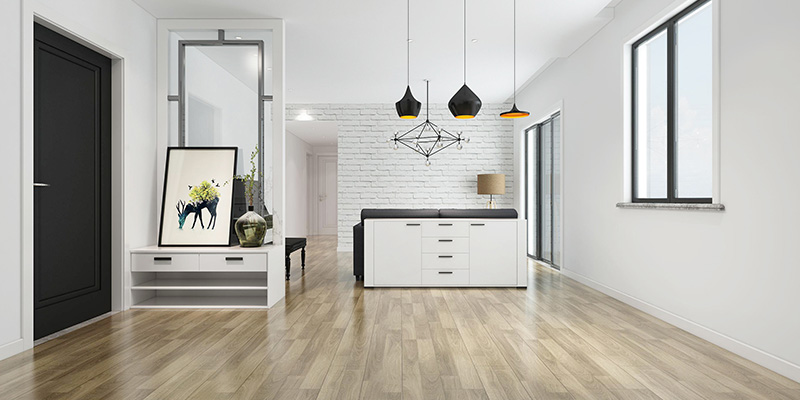
It is expensive to keep a home warm, particularly in the winter. It’s not surprising that the expense of heating and cooling might harm your finances. After all, 46% of the energy used in the typical home goes towards heating and air conditioning. If the thought of your energy bills makes your skin quiver, it’s time to consider upgrading to floor insulation. It will enhance your quality of life and provide a warm surface for your bare feet.
Usually, home renovation professionals prefer to prioritise exterior walls and attics when it comes to insulating a living area. Moreover, they often overlook flooring, which is crucial to insulation efforts.
An insulated floor complements other heating systems and quick-seal window systems nicely. Warmth is reflected into the space by the dead air when combined with underfloor insulation material like rubber flooring. Therefore, spending money on a floor that reduces heating expenses while keeping the living area warm makes sense.
To warm up your home and make it welcoming for everyone, read our in-depth advice on floor insulation.
How Floor Insulation Helps Warm-Up Rooms
The best decision you can make for your house is to install insulated flooring. It not only keeps the rooms and the floor warm and cosy, but it also lowers the cost of heating and cooling.
It Reduces Heat Loss
Although conventional boilers or HVAC systems are often installed in houses to heat rooms, most of the heat escapes via the roof, walls, open cracks, and floors. Installing insulated surfaces produces a thermal envelope that prevents warm air from escaping and aids in retaining heat in enclosed spaces. Less energy is required to maintain the desired temperature within the home because insulation resists temperature changes.
It Produces A Vapour Barrier And Prevents Moisture From Entering
Most flooring is vulnerable to moisture damage, including hardwood, wall-to-wall carpeting, and cork. It may also result in more severe problems like mould and mildew. On the other hand, rubber surfaces are insulated, resistant to moisture, and anti-microbial, helping to create a vapour barrier that keeps water from entering the house.
These barriers are particularly useful in houses with chilly basements that increase the indoor chill.
It Prevents Pipe Freezing
Pipes are vulnerable to breaking or splitting in cold climates during harsh winters because the water they transport often freezes. If your house has lines under the flooring, you won’t even notice or check for damage to pipes caused by the extreme cold.
By choosing an insulated or freeze-thaw surface, the pipes are given additional protection by a layer of insulation between them and the outside environment.
It Minimises Chilly Draughts
This is particularly true for houses that are elevated above the ground or have a crawl space between the floor and the environment. Filling any possible air holes with an insulating covering helps keep the house from getting cold air from the outside.
Helps Control Indoor Temperature In The Summer
Insulated floors are helpful not only in the winter but also in the summer when it comes to regulating the internal temperature. The same heating method is used! The conditioned air will not be able to escape from an insulating surface like a cold rubber surface, keeping the space cooler than the surroundings. The requirement for continuous air cooling is significantly reduced as a result.
Different Types of Floor Insulation
Each underfloor insulation material has unique features and methods of operation. Because of this, no two jobs are identical, and you’ll always need to choose a distinct insulating material.
Insulating Concrete
Insulating concrete is, as its name implies, a mixture of insulation material and cement. The insulating material consists of polystyrene granules between 0.10 and 0.25 inches in diameter. In order to have a high insulation value, insulation screed must always be paired with another kind of insulation.
Insulation Boards – EPS Sheets
EPS sheets, also known as expanded polystyrene sheets, are among the finest materials for floor insulation. They are simple to install and provide excellent insulation. Insulation boards must be installed on a level surface and are pressure-resistant, preventing the floor from cracking or collapsing.
Polyurethane Spray
Polyurethane spray has an exceptional seal and readily excludes any holes or irregularities. Because PUR cannot be sprayed by the user, this material is more expensive than the alternatives. The primary benefits of polyurethane spray are the ability to choose the thickness of the floor insulation and its speedy installation.
With the right floor insulation, you and your family can enjoy many great things. Because of it, your home can be warmer, and the rooms can be more comfortable. And a home that uses less energy and has lower bills is also a good improvement. Floor insulation can also help with new building projects. Adding insulation while a house is built is the best way to do it.







